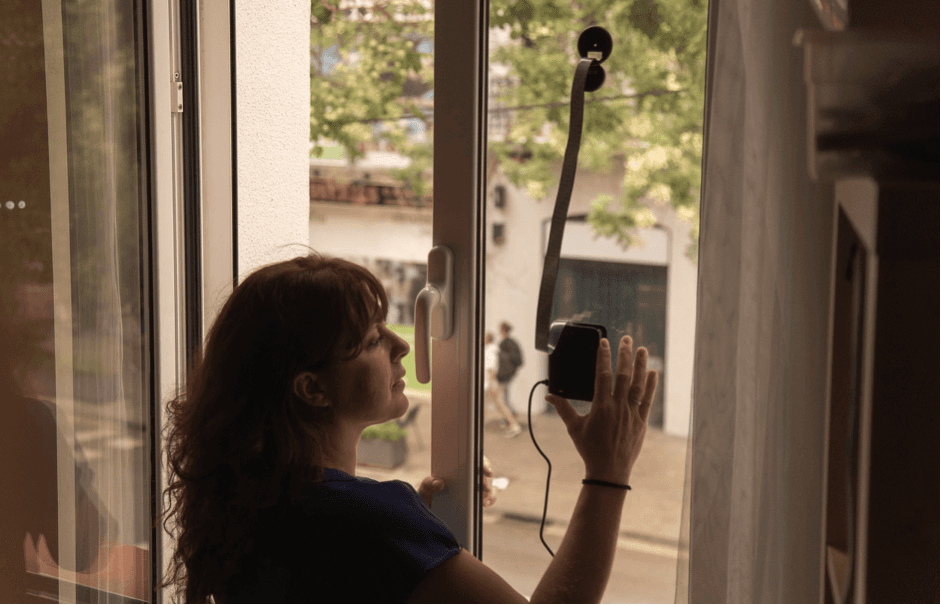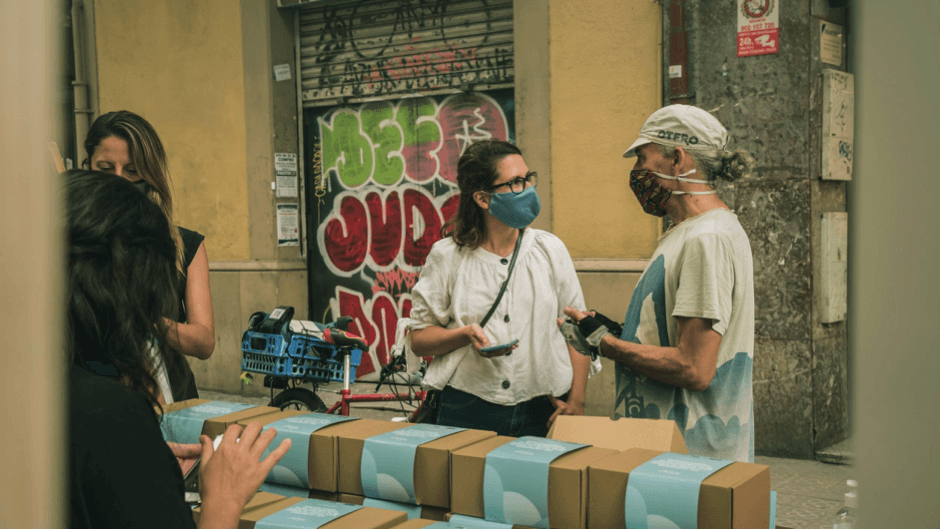Communication and dissemination
Communication and dissemination
The 7 keys to designing an effective citizen participation strategy
The 7 keys to designing an effective citizen participation strategy
20 de enero de 2021


By the editorial team. (Original publication in Spanish)
Over the past few years, at Ideas for Change, we have specialized in developing participation strategies with citizens for projects of very diverse types. Together with volunteers, we have mapped odors in areas affected by industrial emissions, we have monitored mobility to reduce speed limits on streets affected by noise and pollution, and we have measured the effects of pollution on mental health to promote a cleaner and healthier environment. The examples are so many and so rich that we could practically list as many learning experiences as stories we have lived and, indeed, as many people have accompanied us on our journey.
However, at the beginning of last year, the crisis resulting from the Covid-19 pandemic completely challenged the tools and dynamics we had been using until then to tackle such challenges. Social mobilization in the streets, the organization of in-person events to project solutions, or interventions in public spaces ceased to be a possibility and gave way to an extremely complex situation. But, as in everything in this life, valuable lessons come from adversity. Our team decided to reinvent ourselves and seek new and different ways to interact and connect with citizens. An exciting journey that has allowed us to learn much more about how to connect with people in the digital age.
Do you want to know our seven keys to creating a citizen participation strategy during pandemic times? Keep reading and take note!
1. Build the community based on the interests and problems of the people.
What concerns citizens? How can we address their problems? Before starting a project, it is vital to know and inquire about the main concerns affecting a community in order to correctly define the issues to be addressed through the project. Digital tools such as surveys, interactive participation sessions, or groups in instant messaging applications become essential allies to achieve these goals. And we must not forget: the community will be larger and more participative the more interested they are in the area of action, and digitalization can help us detect these concerns.
2. Involve participants in all possible stages of the project.
Conveying to the community that they are an active and essential part of the project will help to create a close bond that will enrich the research. Anyone, based on their knowledge and life and professional experience, can provide valuable ideas that complement scientific action. Establishing precise moments throughout the process during which to offer participants the opportunity to co-create the next phases of the project together will increase their interest and commitment. To achieve this goal in a remote context, it is key to organize online meetings via platforms like Zoom or Jitsi. Furthermore, opting for videos or interactive tools, simultaneous voting, or collaborative creation such as Slido, Pear Deck, or Miro ensures success.
3. Manage expectations with transparency.
Most people involved in science and citizen participation are deeply committed to creating more resilient and livable cities and, therefore, we often raise expectations too high regarding the possibilities of generating change through such projects. However, it is not always easy to meet these objectives immediately, whether due to constraints of the research process itself or underlying obstacles, and the emergence of Covid-19 has been one of the most paradigmatic challenges. To avoid community frustration, it is essential to manage expectations from the start in a transparent and sincere manner.
4. Offer various levels of participation.
Not all participants are the same, nor do they seek to get involved in these actions with the same intensity. Anticipating different levels of participation that allow people to feel comfortable with the commitment that the project requires is a basic aspect for achieving a solid community, especially in a teleworking context where balancing work and personal life is not easy. What’s the key to achieve this? Consult in advance what the formula is in which they want to commit. Some people may only want to attend a few meetings, stay informed, or support colleagues who are providing data, but their contribution will also be valuable.
5. Can't we meet? Bring science to your participants' homes!
Physical meetings and face-to-face contact have historically been one of the cornerstones of citizen participation projects, but the current situation has completely deactivated these experiences. Alternatives are, however, within reach and it only takes a pinch of creativity to find them. In our case, the door-to-door delivery of materials such as installation guides or participation kits has become the ideal solution to overcome the challenges of immobility without putting anyone at risk. Just prepare the materials you need to send, make them sufficiently attractive and self-explanatory so that the people involved can understand them on their own, and send them out.

6. Communicate scientifically, but understandably.
Sometimes scientific research can be inaccessible if the recipient does not have the necessary knowledge. Therefore, when communicating citizen participation projects, it is essential to ensure that the information we transmit is understood, without losing any technical rigor. Identifying who we are addressing and adapting the message to the particular needs of each community are the key exercises for effective communication. The dissemination of newsletters and information capsules that allow information to be broken down into digestible parts and made more accessible is undoubtedly a winning strategy. Additionally, in the digital context prompted by Covid-19, it is essential to maintain a direct line of communication with participants through email, social media, or instant messaging applications.
7. Return results and analyze them with the participants.
Citizens have much more to contribute to citizen science projects than just data. We have already seen how involving participants in the different phases of the research process can be crucial to solve the questions that each stage poses. Not only that, but examining the data collected in these types of projects together with the community can help clarify uncertainties in the interpretation of the results that improve the quality of the research. Additionally, this is a way to account for the citizens due to their selfless commitment to the project.
Did you find our tips interesting? Would you like to know more about the citizen science projects we promote and the services we offer?
By the editorial team. (Original publication in Spanish)
Over the past few years, at Ideas for Change, we have specialized in developing participation strategies with citizens for projects of very diverse types. Together with volunteers, we have mapped odors in areas affected by industrial emissions, we have monitored mobility to reduce speed limits on streets affected by noise and pollution, and we have measured the effects of pollution on mental health to promote a cleaner and healthier environment. The examples are so many and so rich that we could practically list as many learning experiences as stories we have lived and, indeed, as many people have accompanied us on our journey.
However, at the beginning of last year, the crisis resulting from the Covid-19 pandemic completely challenged the tools and dynamics we had been using until then to tackle such challenges. Social mobilization in the streets, the organization of in-person events to project solutions, or interventions in public spaces ceased to be a possibility and gave way to an extremely complex situation. But, as in everything in this life, valuable lessons come from adversity. Our team decided to reinvent ourselves and seek new and different ways to interact and connect with citizens. An exciting journey that has allowed us to learn much more about how to connect with people in the digital age.
Do you want to know our seven keys to creating a citizen participation strategy during pandemic times? Keep reading and take note!
1. Build the community based on the interests and problems of the people.
What concerns citizens? How can we address their problems? Before starting a project, it is vital to know and inquire about the main concerns affecting a community in order to correctly define the issues to be addressed through the project. Digital tools such as surveys, interactive participation sessions, or groups in instant messaging applications become essential allies to achieve these goals. And we must not forget: the community will be larger and more participative the more interested they are in the area of action, and digitalization can help us detect these concerns.
2. Involve participants in all possible stages of the project.
Conveying to the community that they are an active and essential part of the project will help to create a close bond that will enrich the research. Anyone, based on their knowledge and life and professional experience, can provide valuable ideas that complement scientific action. Establishing precise moments throughout the process during which to offer participants the opportunity to co-create the next phases of the project together will increase their interest and commitment. To achieve this goal in a remote context, it is key to organize online meetings via platforms like Zoom or Jitsi. Furthermore, opting for videos or interactive tools, simultaneous voting, or collaborative creation such as Slido, Pear Deck, or Miro ensures success.
3. Manage expectations with transparency.
Most people involved in science and citizen participation are deeply committed to creating more resilient and livable cities and, therefore, we often raise expectations too high regarding the possibilities of generating change through such projects. However, it is not always easy to meet these objectives immediately, whether due to constraints of the research process itself or underlying obstacles, and the emergence of Covid-19 has been one of the most paradigmatic challenges. To avoid community frustration, it is essential to manage expectations from the start in a transparent and sincere manner.
4. Offer various levels of participation.
Not all participants are the same, nor do they seek to get involved in these actions with the same intensity. Anticipating different levels of participation that allow people to feel comfortable with the commitment that the project requires is a basic aspect for achieving a solid community, especially in a teleworking context where balancing work and personal life is not easy. What’s the key to achieve this? Consult in advance what the formula is in which they want to commit. Some people may only want to attend a few meetings, stay informed, or support colleagues who are providing data, but their contribution will also be valuable.
5. Can't we meet? Bring science to your participants' homes!
Physical meetings and face-to-face contact have historically been one of the cornerstones of citizen participation projects, but the current situation has completely deactivated these experiences. Alternatives are, however, within reach and it only takes a pinch of creativity to find them. In our case, the door-to-door delivery of materials such as installation guides or participation kits has become the ideal solution to overcome the challenges of immobility without putting anyone at risk. Just prepare the materials you need to send, make them sufficiently attractive and self-explanatory so that the people involved can understand them on their own, and send them out.

6. Communicate scientifically, but understandably.
Sometimes scientific research can be inaccessible if the recipient does not have the necessary knowledge. Therefore, when communicating citizen participation projects, it is essential to ensure that the information we transmit is understood, without losing any technical rigor. Identifying who we are addressing and adapting the message to the particular needs of each community are the key exercises for effective communication. The dissemination of newsletters and information capsules that allow information to be broken down into digestible parts and made more accessible is undoubtedly a winning strategy. Additionally, in the digital context prompted by Covid-19, it is essential to maintain a direct line of communication with participants through email, social media, or instant messaging applications.
7. Return results and analyze them with the participants.
Citizens have much more to contribute to citizen science projects than just data. We have already seen how involving participants in the different phases of the research process can be crucial to solve the questions that each stage poses. Not only that, but examining the data collected in these types of projects together with the community can help clarify uncertainties in the interpretation of the results that improve the quality of the research. Additionally, this is a way to account for the citizens due to their selfless commitment to the project.
Did you find our tips interesting? Would you like to know more about the citizen science projects we promote and the services we offer?


